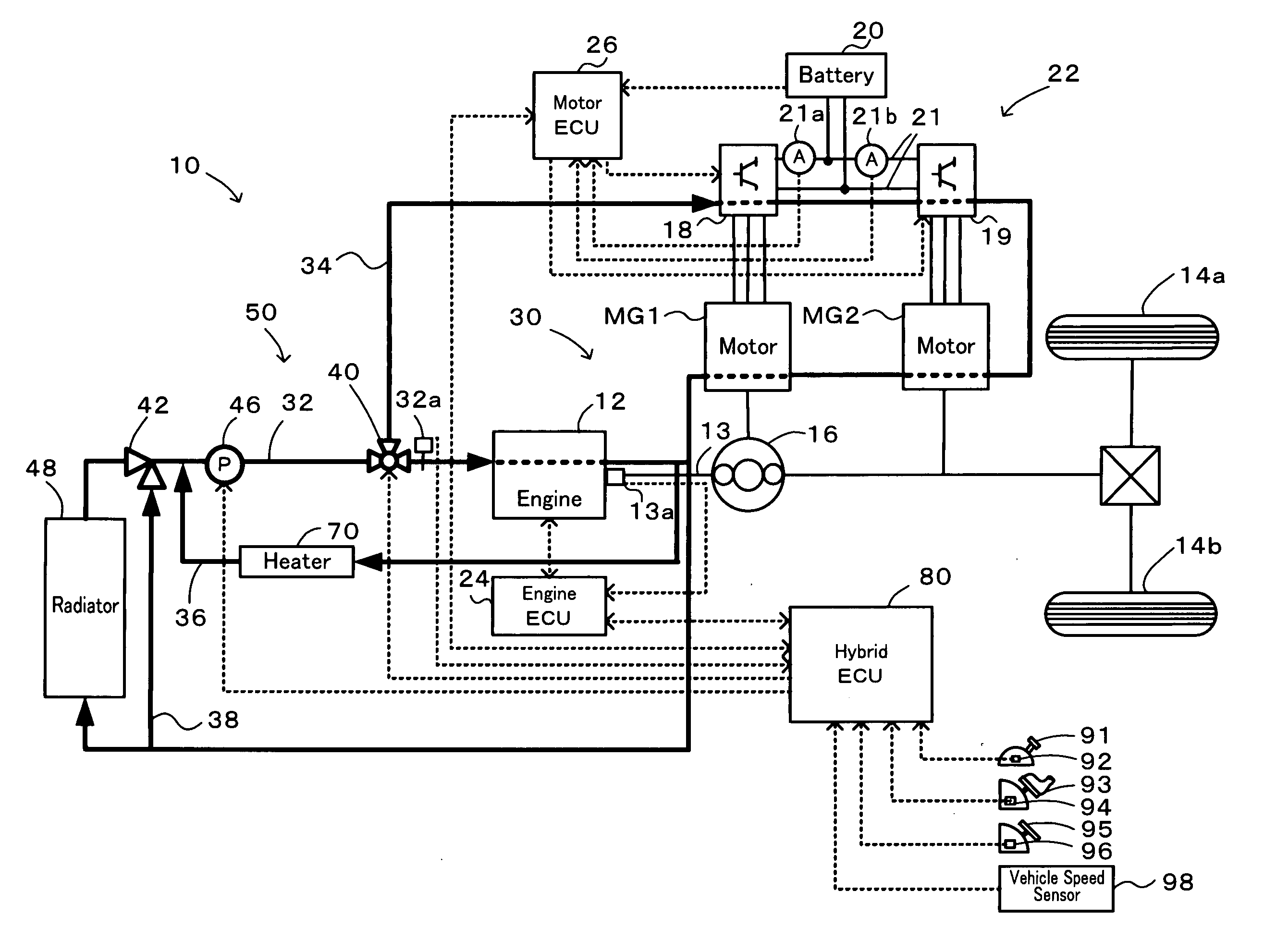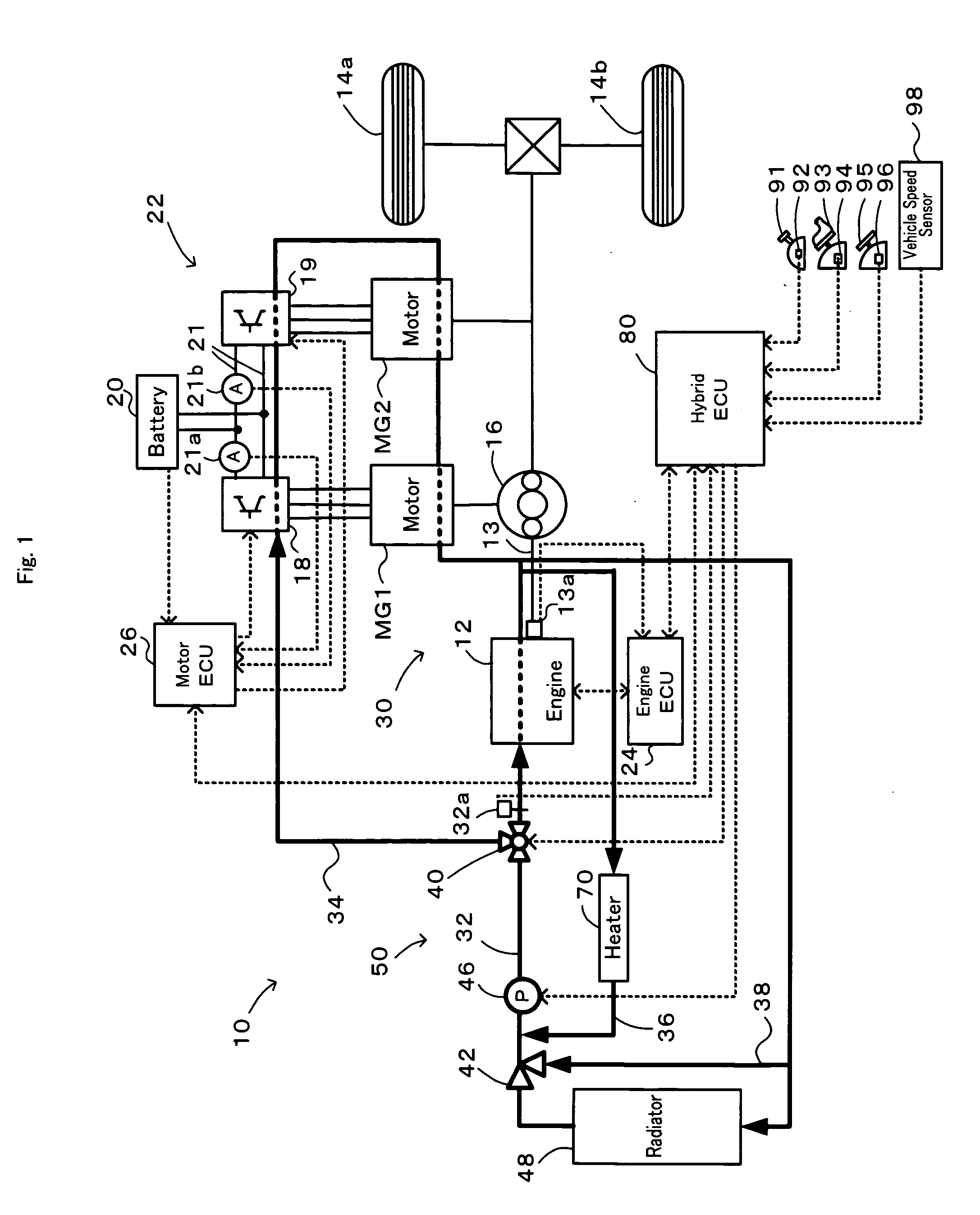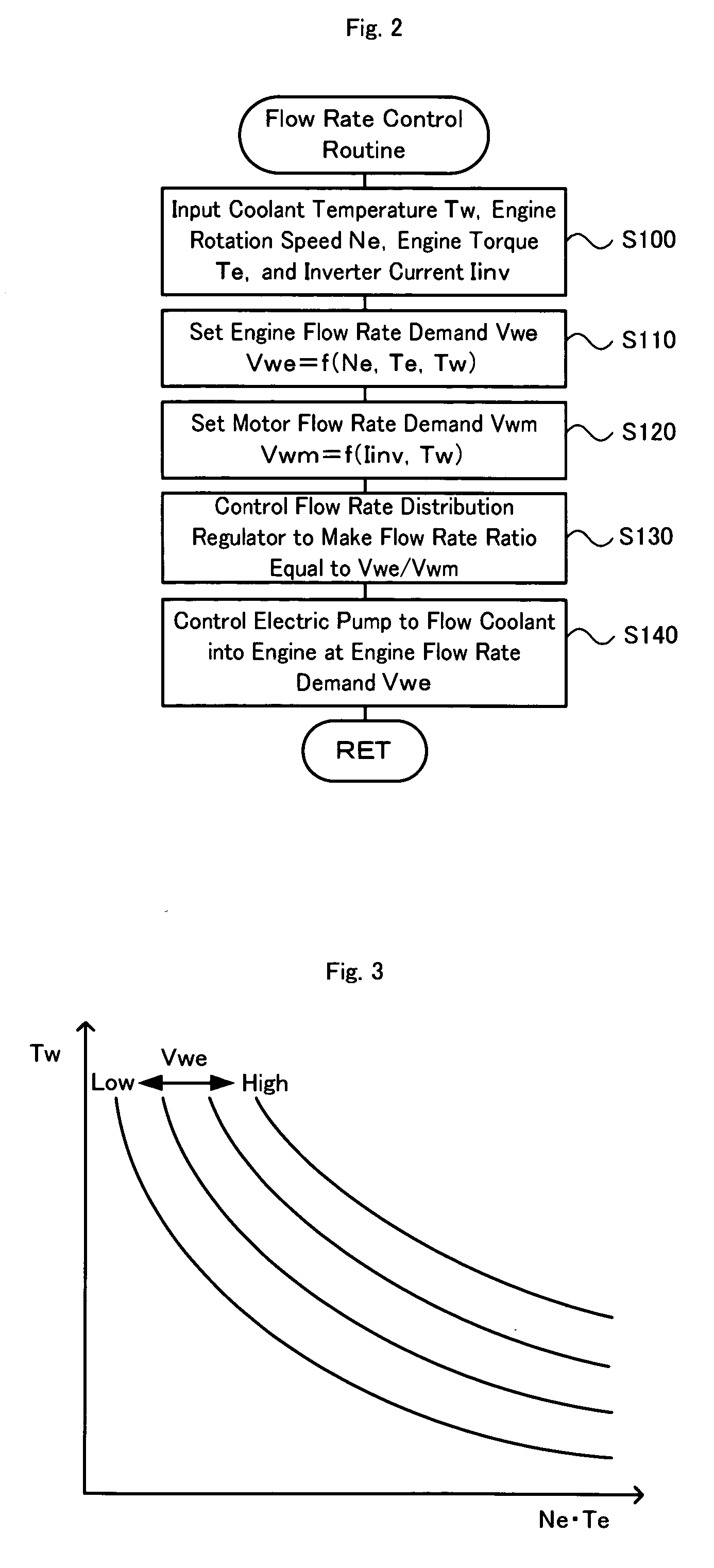Cooling System, Control Method of Cooling System, and Vehicle Equipped With Cooling System
a technology of cooling system and control method, which is applied in the direction of hybrid vehicles, process and machine control, instruments, etc., can solve the problems of excessive cooling of engine and motor, excessive cooling of motor, excessive cooling of engine, etc., and achieve the effect of reducing power consumption
- Summary
- Abstract
- Description
- Claims
- Application Information
AI Technical Summary
Benefits of technology
Problems solved by technology
Method used
Image
Examples
Embodiment Construction
[0019]One mode of carrying out the invention is described below as a preferred embodiment with reference to the accompanied drawings. FIG. 1 schematically illustrates the configuration of a hybrid vehicle 10 equipped with a cooling system 50 in one embodiment according to the invention. The hybrid vehicle 10 of the embodiment is equipped with a drive train 30 and a hybrid electronic control unit (hereafter referred to as hybrid ECU) 80 configured to control the operations of the whole hybrid vehicle 10, as well as the cooling system 50. The drive train 30 includes an engine 12, a planetary gear mechanism 16 designed to have a carrier connected to a crankshaft 13 of the engine 12 and a ring gear connected to a driveshaft linked with an axle of front wheels 14a and 14b, a motor MG1 configured to have a rotating shaft connected to a sun gear of the planetary gear mechanism 16 and to have power generation capability, a motor MG2 configured to have a rotating shaft connected to the ring ...
PUM
 Login to View More
Login to View More Abstract
Description
Claims
Application Information
 Login to View More
Login to View More - R&D
- Intellectual Property
- Life Sciences
- Materials
- Tech Scout
- Unparalleled Data Quality
- Higher Quality Content
- 60% Fewer Hallucinations
Browse by: Latest US Patents, China's latest patents, Technical Efficacy Thesaurus, Application Domain, Technology Topic, Popular Technical Reports.
© 2025 PatSnap. All rights reserved.Legal|Privacy policy|Modern Slavery Act Transparency Statement|Sitemap|About US| Contact US: help@patsnap.com



